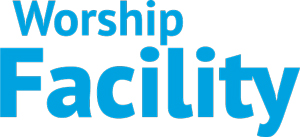Many Houses of Worship still seem to walk the line on live streaming their worship services and special events. Some would like to, because starting a live stream can be an exciting way to share content with an audience in real-time, but they just don’t have enough staff, equipment, or knowledge. So, here are the general steps you can follow to start live streaming.
Define Your Purpose and Audience
To know the purpose of your live stream you need to determine the goal of it. Understand who your audience is and what they would find engaging, which can be information easily collected by just asking worshippers as they leave the service or by email or text.
Next we need to choose a platform. What is a platform you ask? A platform enables you to upload, convert, store, and play back video content on the Internet. Users will generally upload video content via the hosting service’s website, mobile or desktop application, or other interfaces, which typically provides embed codes or links that allow others to view the video content. Select the platform that best suits your content and audience. Some popular live streaming platforms include:
- YouTube Live
- Twitch
- Facebook Live
- Instagram Live
- LinkedIn Live
- TikTok Live

Preparing your Equipment
You will need:
- A good webcam or camera (DSLR or mirrorless cameras for higher quality)
- A quality microphone for clear audio (USB mics like Blue Yeti or XLR mics with an audio interface)
- Proper lighting setup to ensure your video is well-lit (softbox lights, ring lights)
- A capable device to handle the streaming software and the live stream itself
- A stable and high-speed internet connection (preferably wired).
Streaming software
This allows you to broadcast live video and audio over the internet. It captures, encodes, and streams audio and video from various input and output sources like camera, microphone or simply screen capture. Popular options include:
- OBS Studio (Open Broadcaster Software)
- Streamlabs OBS
- XSplit
- Wirecast
- vMix

Set Up Your Video Stream
First, install and configure your software. Download your chosen streaming software and set it up according to the instructions. Set up scenes for different parts of your stream (e.g., starting soon, main content, intermission) and add sources (camera, microphone, etc.). Adjust settings like resolution, bitrate, and frames per second (FPS) for optimal performance and quality
Test Your Setup
Prior to going live to your followers, run a private or unlisted test stream. Check Audio and Video Quality make sure your audio and video are clear and in sync. Adjust settings if necessary. Fine-tune your settings based on the test stream results.
Promoting Your Live Stream
Announce your live stream in advance on your social media platforms. Make an eye-catching thumbnail and a compelling title to attract viewers. Engage with your audience. Let them know when you’ll be live and encourage them to tune in.
Lets Go Live!
When you’re ready, hit the “Start Streaming” button in your streaming software. Make sure you interact with viewers during your broadcast. Engage with them by responding to comments and questions in real-time. Make sure someone on your staff is monitoring your stream, and keep an eye on your stream’s performance and viewer feed.
Post-Stream Activities
Save and Share. Save your stream recording and share it on your platform for those who missed it.
Analyze Feeds Performance and Review analytics. Check these measurements to see how your stream performed and identify areas for improvement.
Gather Feedback. Ask your audience for feedback to improve future streams.
A Few Tips To Remember
- Make sure you’re consistent. That helps build an audience.
- Stick to a regular streaming schedule.
- Engage Actively. Keep your audience engaged by interacting with them and providing valuable content.
- Stay Updated. It’s very important once you’re up and running to keep up with the latest trends and updates in live streaming technology and platforms.
With these steps, you’ll be well on your way to starting a successful live stream. Good luck!


